 Loading... Please wait...
Loading... Please wait...All prices are in All prices are in AUD
Categories
- Home
- Blog History Revisited
- Cupid
Blog History Revisited - Cupid
Origins of St. Valentine's Day
Posted by ©Sandra J I Ker Owner Antiquarian Print Gallery 1989-2016, South Australia. www.historyrevisited.com.au on 14th Feb 2016
Valentine = Christian Martyr?

Saint Valentine’s Day is said to be named after one or more of the Christian Martyrs of Ancient Rome. The name “Valentine”, derived from valens (worthy, strong, powerful). Of the Saint Valentine whose feast is on February 14, nothing is known except his name and that he was buried at the Via Flaminia north of Rome on February 14. It is even uncertain whether the feast of that day celebrates only one saint or more saints of the same name. The feast of St. Valentine was first established in 496 by Pope Gelasius I, who included Valentine among those “… whose names are justly reverenced among men, but whose acts are known only to God.” As Gelasius implied, nothing was known, even then, about the lives of any of these martyrs.
Saint Valentine-Nuremberg Chronicle 1493
Claudius Gothicus, Emperor Claudius II
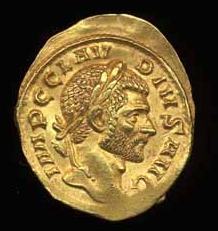
The first representation of Saint Valentine appeared in the Nuremberg Chronicle(1493). The text states that he was a Roman priest martyred during the reign of Claudius II. Claudius was impressed by Valentine and had a discussion with him, attempting to get him to convert to Roman paganism in order to save his life. Valentine refused and tried to convert Claudius to Christianity instead. He Failed. Before his execution, he is reported to have performed a miracle by healing the blind daughter of his jailer. Where the connection with sentimental love may have been embroidered in modern times to portray Valentine as a priest who refused an unattested law attributed to Claudius II, allegedly ordering that young men remain single. The Emperor supposedly did this to grow his army, believing that married men did not make for good soldiers. The priest Valentine, however, secretly performed marriage ceremonies for young men. When Claudius found out about this, he had Valentine arrested and thrown in jail and suffered the fate of many martyrs.
Christianity Remodels Pagan Festivals
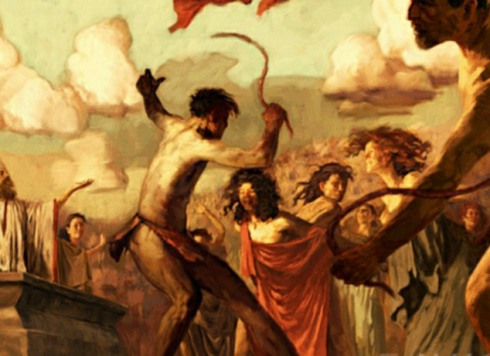
English 18th century antiquarians, Alban Butler and Francis Douce, noting the obscurity of Saint Valentine’s identity, suggested that Valentine’s Day was created as an attempt to supersede the pagan holiday of Lupercalia. In Pre-Roman times a very ancient pastoral festival was held between 13-15 February to keep away evil spirits, cleanse the city, revitalize and increase fertility. It is thought to have evolved from the Ancient Greek festival, Arcadia Lykaia, and worship of Pan, oft associated with sexuality.
The Pre-Roman Festival of Lupercalia.
New Legend of Saint Valentine

Many of the current legends that characterize Saint Valentine were invented in the fourteenth century in England, notably by Geoffrey Chaucer and his circle, when the feast day of February 14 first became associated with romantic love.
Portrait of Chaucer by Thomas Hoccleve in the Regiment of Princes (1412).
Enter the Messenger, Cupid
 Now for Cupid’s Entrance: this mischievous messenger has long been associated with love & lovers armed with arrows that would pierce his victims hearts causing them to fall deeply in love. In ancient Greece he was known as Eros, son of Aphrodite, the Goddess of Love and Beauty, while to the Romans he was Cupid, son of Venus. Venus was envied the beauty of mortal maiden, Psyche, and ordered her son to punish her. He instead fell in love and married the mortal beauty who was forbidden to look at her godly husband. Upon succumbing to curiosity an angry Cupid vanished. In her efforts to find her love Venus set her a series of more difficult tasks until she failed and was punished by eternal sleep. The God’s, moved by Psyche’s love for Cupid by surviving the harsh obstacles, made her a goddess.
Now for Cupid’s Entrance: this mischievous messenger has long been associated with love & lovers armed with arrows that would pierce his victims hearts causing them to fall deeply in love. In ancient Greece he was known as Eros, son of Aphrodite, the Goddess of Love and Beauty, while to the Romans he was Cupid, son of Venus. Venus was envied the beauty of mortal maiden, Psyche, and ordered her son to punish her. He instead fell in love and married the mortal beauty who was forbidden to look at her godly husband. Upon succumbing to curiosity an angry Cupid vanished. In her efforts to find her love Venus set her a series of more difficult tasks until she failed and was punished by eternal sleep. The God’s, moved by Psyche’s love for Cupid by surviving the harsh obstacles, made her a goddess.
Cupid preparing his arrows of love...or pain?/“Psyche & Amor” (Psyche receiving Cupid’s First Kiss)
Enter Anonymous Valentine Cards
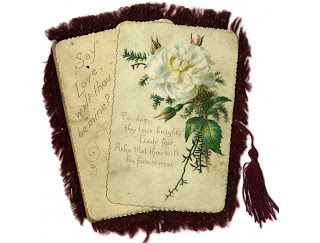
In 1797, a British publisher issued The Young Man's Valentine Writer, which contained scores of suggested sentimental verses for the young lover unable to compose his own. Printers had already begun producing a limited number of cards with verses and sketches. Reduction in postal rates in the next century ushered in the less personal but easier practice of mailing Valentines. That, in turn, made it possible for the first time to exchange cards anonymously. At this stage thre is sudden appearance of racy verse in an otherwise prudishly Victorian Era. Paper Valentines became so popular in England in the early 19th century that they were assembled in factories. Fancy Valentines Cards were made with real real lace and ribbons. By the mid 1800s the latter was replaced by paper lace. In the UK, just under half of the population spend money on their Valentines and around 1.3 billion pounds are spent yearly on cards, flowers, chocolates and other gifts, with an estimated 25 million cards being sent.
Leigh Eric Schmidt, “Graham’s American Monthly”, Esther Howland
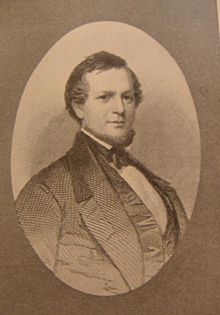
The reinvention of Saint Valentine’s Day in the 1840s has been
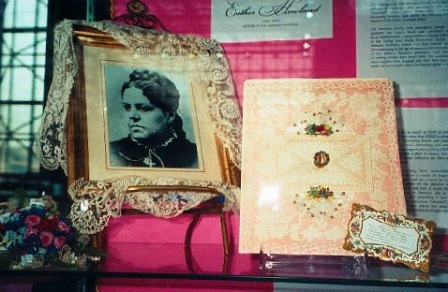
traced by Leigh Eric Schmidt. As a writer in Graham’s American Monthly observed in 1849, “Saint Valentine’s Day… is becoming, nay it has become, a national holyday.” In the United States, the first mass-produced valentines of embossed paper lace were produced and sold shortly after 1847 by Esther Howland (1828–1904) of Worcester, Massachusetts. She was an artist and canny businesswoman.
George Rex Graham, Founder of “Graham’s Magazine” in 1840/Esther Howland, artist and Successful Businesswoman./
© Sandra J I Ker, 2016, Antiquarian Print Gallery 1989-2021, www.historyrevisited.com.au
Recent Posts
- » Lady Sarah Lennox, King George III & The Honourable George Napier
- » Schomburgk's Botanic Garden & Park Plan, 1874
- » "City of Adelaide" Clipper Ship - What is Old Is New Again
- » Napoleon, Hudibrastic Poetry, Doctor Syntax & the Power of Satire
- » Colonial Melbourne to Albury "Parlour Car" Photo Connects to Adelaide Past & Present





